65th Aggressor Squadron
The 65th Aggressor Squadron is a United States Air Force unit. It was last assigned to the 57th Adversary Tactics Group at Nellis Air Force Base, Nevada.
65th Aggressor Squadron
 | |
|---|---|
 McDonnell Douglas F-15C Eagle 80-0010 of the 65th Aggressor Squadron in the modern aggressor motif, 2008 | |
| Active | 1942–1945; 1946–1958; 1969–1989; 2005–2014; 2019- |
| Country | |
| Branch | |
| Role | Fighter Aggressor |
| Part of | Air Combat Command |
| Engagements | World War II (EAME Theater) |
| Decorations | Distinguished Unit Citation (3x) Air Force Outstanding Unit Award (3x) French Croix de Guerre with Palm |
| Insignia | |
| 65th Aggressor Squadron emblem (approved 14 July 2008)[1] | 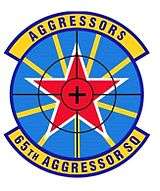 |
| 65th Aggressor Squadron emblem (approved 16 July 1998) | 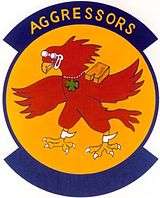 |
| 65th Pursuit Squadron emblem (approved 18 December 1941)[2] | 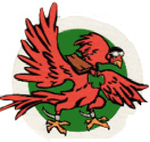 |
Overview
The 65th Aggressor Squadron was assigned 24 McDonnell F-15 Eagle aircraft, painted in camouflage schemes identical to those observed on Russian-manufactured Sukhoi Su-27 Flanker fighters and operated in conjunction with the 64th Aggressor Squadron, which performs a similar task using F-16 Fighting Falcons.
On 30 July 2008, one pilot was killed and another injured when their F-15 crashed into the ground during a training mission.[3]
The Air Force inactivated[4] the unit on September 26, 2014 due to Fiscal Year 2015 budget constraints imposed upon the Air Force that zero-lined the squadron's budget.[5] Its fleet was maintained by Flanker Aircraft Maintenance Unit, a section of the 757th Aircraft Maintenance Squadron.It was then reactivated on 9 May 2019 at Nellis Air Force Base.
History
- See also: 4477th Tactical Evaluation Flight
World War II
Formed as a P-40 Warhawk pursuit squadron in January 1941 as part of the Army Air Corps Northeast Defense Sector (later I Fighter Command) at Mitchel Field, New York. Trained in New England and provided air defense of the northeast after the Japanese attack on Pearl Harbor.
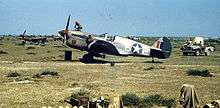
Was reassigned to the U.S. Army Middle East Force in Egypt, July 1942, becoming part of IX Fighter Command. Took part in the British Western Desert Campaign, engaged in combat during the Battle of El Alamein and, as part of Ninth Air Force, supported the Commonwealth Eighth Army's drive across Egypt and Libya, escorting bombers and flying strafing and dive-bombing missions against airfields, communications, and troop concentrations until Axis defeat in Tunisia in May 1943. The unit participated in the reduction of Pantelleria (May–June 1943) and the conquest of Sicily (July–August 1943).
The squadron supported the British Eighth Army's landing at Termoli and subsequent operations in Italy, being reassigned to Twelfth Air Force in August 1943. It flew dive-bombing, strafing, patrol, and escort missions.
In 1944, converted to Republic P-47 Thunderbolt aircraft and flew interdiction operations in Italy. They moved to Corsica on 30 March 1944 to operate as a separate task force. It flew interdiction missions against railroads, communication targets, and motor vehicles behind enemy lines, providing a minimum of 48 fighter-bomber sorties per day.
Participated in the French campaign against Elba in June 1944 and in the invasion of Southern France in August. It engaged in interdiction and support operations in northern Italy from September 1944 to May 1945.
The 65th flew its last combat mission on 2 May 1945. Remained in northern Italy after the end of the European War, demobilizing throughout the summer of 1945. It was reassigned to the United States in August 1945 without personnel or equipment and was inactivated at the end of August.
Cold War
Reactivated in August 1946 as part of Eleventh Air Force (later Alaskan Air Command) as part of the air defense forces in the northwest Pacific. Squadron began training new P-51 pilots at Ladd Field, Alaska. Later, it was equipped with F-80Bs in March–April 1948, F-80Cs in October–December 1948, F-94Bs in the summer of 1951, and F-89Cs in September 1953. With these aircraft, the squadron provided fighter aircraft defense in support of the Alaska Area until late in the 1950s.
In October 1969, the 65th Fighter Weapons Squadron took over the F-100D/F Super Sabre aircraft, personnel, and facilities of the 4536th Fighter Weapons Squadron at Nellis Air Force Base. F-100s tail coded "WB", only to become non-operational early in 1970. On reactivation was equipped with A-7D Corsair II ground attack aircraft, operating from Luke Air Force Base, Arizona and Davis-Monthan Air Force Base, Arizona. Conducted fighter weapons training with the A-7D until June 1975 when aircraft sent to Air National Guard units.
Aggressor training

The squadron was re-equipped in October 1975 with F-5E Tiger IIs, the aircraft having been originally destined for delivery to South Vietnam until that nation collapsed earlier that year and the aircraft subsequently becoming available. Since the F-5E had approximately the size and performance characteristics of a Soviet MiG-21, it was used throughout the US and overseas to teach adversarial tactics and provide dissimilar air combat training to US Air Force flying units, eventually becoming the 65th Aggressor Squadron. The squadron's F-5s carried no tail codes, although they did carry the Nellis black/yellow checkertail stripe and a Tactical Air Command emblem on tail. The aircraft were painted in Soviet Air Forces motif with subdued USAF markings, with the last two digits of the F-5's tail number painted in the then-Soviet style in red on the front fuselage, highlighted in white.
Deployed throughout US and overseas to teach adversarial tactics and provide dissimilar air combat training to US Air Force flying units. Re-designated 65th Tactical Fighter Aggressor Squadron on 30 December 1981. Added subdued "WA" tail code in early 1987. Redesignated again as 64th Aggressor Squadron on 4 January 1983.
Operated until 1989 when the F-5s began having structural problems with the airframes. As the Cold War ended and military budgets adjusted, the unit flew their last aggressor flight in the F-5 on 7 April 1989.
Return to aggressor training

The squadron was reactivated in September 2005, flying F-15Cs and F-15Ds as the 65th Aggressor Squadron. The 65th annually participated in the USAF Red Flag and Canadian Forces Maple Flag exercises, provided USAF Weapons School syllabus support, priority test mission support, and "road shows" that visited various units throughout the US to support Air Combat Command (ACC) and ACC-gained Air Force Reserve Command and Air National Guard units for training.
On 9 May 2019 US Air Force announced it planned to reactivate the 65th Aggressor Squadron[6] with new aircraft, F-35A Lightning II.[7]
Lineage
- Constituted as the 65th Pursuit Squadron (Interceptor) on 20 November 1940
- Activated on 15 January 1941
- Redesignated 65th Fighter Squadron on 15 May 1942
- Inactivated on 7 November 1945
- Activated on 15 August 1946
- Redesignated 65th Fighter-Interceptor Squadron on 20 January 1950
- Inactivated on 8 January 1958
- Redesignated 65th Fighter Weapons Squadron on 22 August 1969
- Activated on 15 October 1969
- Redesignated: 65th Tactical Fighter Training Aggressor Squadron on 30 December 1981
- Redesignated: 65th Aggressor Squadron on 1 April 1983
- Inactivated on 7 April 1989
Assignments
- 57th Pursuit Group (later 57th Fighter Group), 15 January 1941 - 7 November 1945
- 57th Fighter Group (later Fighter-Interceptor Group), 15 August 1946
- 10th Air Division, 13 April 1953
- 328th Fighter Group, 1 November 1957 - 8 January 1958
- 57th Fighter Weapons Wing (later 57th Tactical Training Wing, 57th Fighter Weapons Wing), 15 October 1969 - 7 April 1989
- 57th Adversary Tactics Group, 15 September 2005 – 26 September 2014[1][4]
Stations
|
|
Aircraft
- Curtiss P-40 Warhawk, 1941–1943
- Republic P-47 Thunderbolt, 1943–1945
- Beechcraft C-45 Expeditor, 1946–1947
- North American P-51 Mustang, 1946–1948
- Lockheed F-80 Shooting Star, 1948–1951
- Douglas C-47 Skytrain, 1948
- North American AT-6 Texan (later T-6), 1946, 1948
- Douglas B-26 Invader, 1949
- Lockheed T-33 T-Bird, 1949–1956
- Lockheed F-94 Starfire, 1951–1954
- Northrop F-89 Scorpion, 1953–1957
- North American F-100 Super Sabre, 1969
- LTV A-7D Corsair II, 1972–1975
- Northrop F-5E Tiger II, 1975–1989
- McDonnell F-15C Eagle, 2005–2014[1][4]
References
- Notes
- Robertson, Patsy (30 July 2009). "Factsheet 65 Aggressor Squadron (ACC)". Air Force Historical Research Agency. Retrieved 5 November 2016.
- Maurer, Combat Squadrons, pp. 246-247
- "F-15 crashes in Nevada desert; 1 pilot dead". NBC News. Retrieved 28 June 2011.
- "Nellis aggressor squadron inactivated". af.mil. Retrieved 29 September 2014.
- http://www.reviewjournal.com/news/las-vegas/65th-aggressor-squadron-falls-prey-nellis-budget-cuts
- https://theaviationist.com/2019/05/10/u-s-air-force-to-reactivate-65th-aggressor-squadron-at-nellis-afb-with-11-f-35a-lightning-ii/
- https://defence-blog.com/news/u-s-air-force-decided-to-create-f-35s-aggressor-squadron-at-nellis-air-force-base.html
Bibliography
![]()
- Cornett, Lloyd H; Johnson, Mildred W (1980). A Handbook of Aerospace Defense Organization, 1946 - 1980 (PDF). Peterson AFB, CO: Office of History, Aerospace Defense Center. Retrieved 23 March 2012.
- Maurer, Maurer, ed. (1983) [1961]. Air Force Combat Units of World War II (PDF) (reprint ed.). Washington, DC: Office of Air Force History. ISBN 0-912799-02-1. LCCN 61060979.
- Maurer, Maurer, ed. (1982) [1969]. Combat Squadrons of the Air Force, World War II (PDF) (reprint ed.). Washington, DC: Office of Air Force History. ISBN 0-405-12194-6. LCCN 70605402. OCLC 72556.
- Ravenstein, Charles A. (1984). Air Force Combat Wings, Lineage & Honors Histories 1947-1977. Washington, DC: Office of Air Force History. ISBN 0-912799-12-9.
- "ADCOM's Fighter Interceptor Squadrons". The Interceptor. Aerospace Defense Command. 21 (1): 5–11, 26–31, 40–45, 54–59. January 1979.

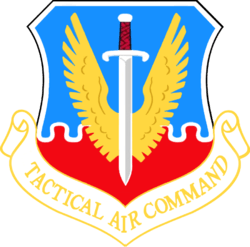
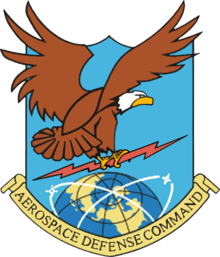
.svg.png)
.svg.png)
.jpg)